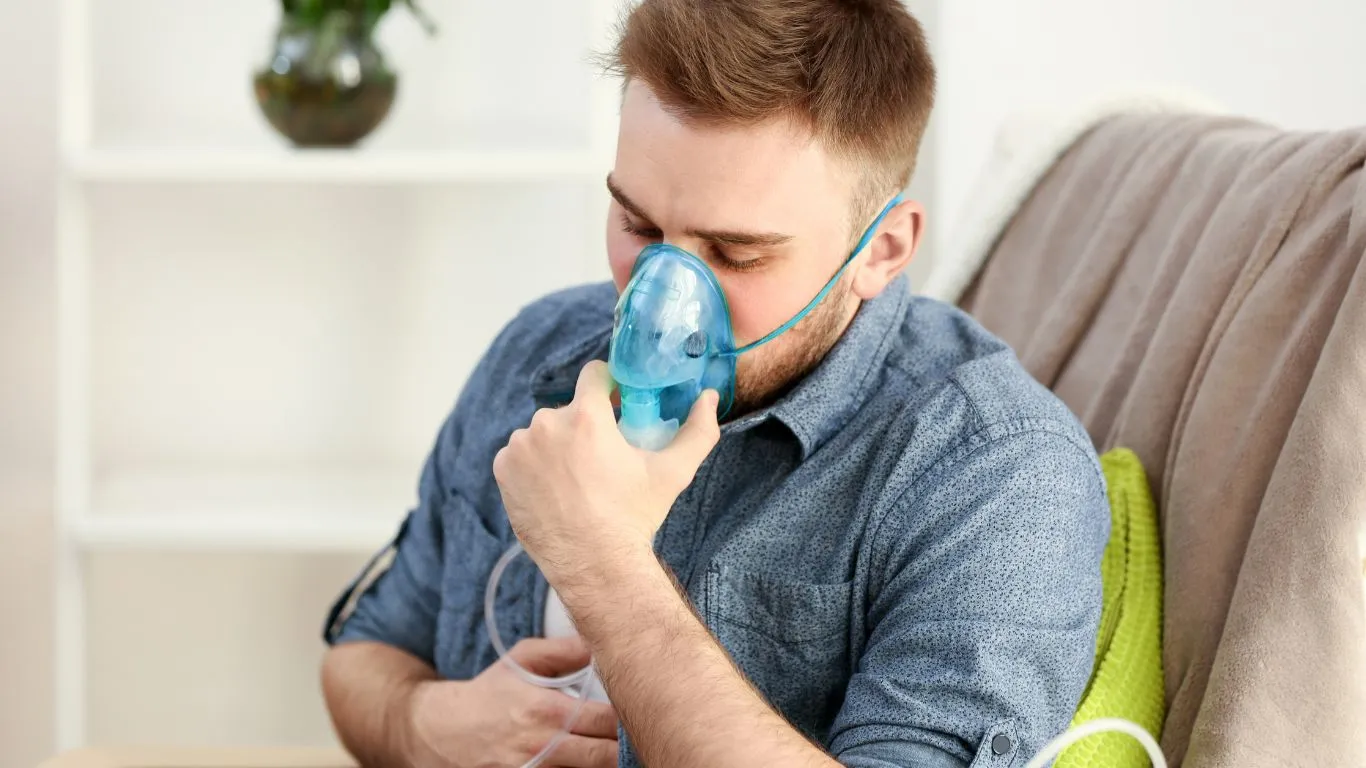Best Asthma Management Tips for Young Athletes to Breathe & Perform Better
When you’re a young athlete dealing with asthma, managing symptoms while staying competitive can feel like a constant uphill battle. Trust me, I’ve seen it firsthand in my years of working with young athletes who refuse to let their asthma hold them back. The good news? With the right asthma management tips for young athletes, you can stay in the game, breathe easier, and perform at your best. Let’s dive into how you can outplay asthma instead of letting it sideline you.
Understanding Asthma in Young Athletes

First things first—what makes asthma in young athletes different from the average case? Well, sports and intense physical activity can trigger symptoms, leading to shortness of breath, wheezing, or even a full-blown asthma attack. But that doesn’t mean you have to sit out while others play. It just means you need a solid game plan.
Why Exercise Can Trigger Asthma
Ever noticed how cold air, high-intensity workouts, or dry environments make your asthma flare up? That’s because exercise-induced bronchoconstriction (EIB) can cause the airways to tighten when they’re exposed to certain triggers. But don’t worry—strategic training, warm-ups, and proper inhaler use can help keep those symptoms in check.
Common Symptoms to Watch For
- Shortness of breath during or after exercise
- Chest tightness
- Wheezing or coughing, especially in cold weather
- Fatigue faster than usual
Recognizing these signs early on is crucial to preventing a minor issue from turning into a serious emergency.
Pre-Game: Preparing for Sports with Asthma

Like any good athlete, preparation is key. When you have asthma, that means making sure your lungs are as ready as your muscles before you hit the field.
Work With Your Doctor on an Asthma Action Plan
Before committing to a sport or intense training, talk to your doctor about an asthma action plan. This outlines when to take medications, what triggers to avoid, and how to handle flare-ups. Think of it as your playbook for breathing success.
The Power of a Proper Warm-Up
Jumping straight into intense exercise can shock your lungs and trigger symptoms. Instead, ease into movement with a gradual warm-up, including light jogging, dynamic stretching, and controlled breathing techniques.
Medications: Using Inhalers the Right Way
If your doctor prescribed a bronchodilator inhaler (like albuterol), using it 15-30 minutes before exercise can prevent asthma symptoms. But here’s the kicker—you need to use it properly! A surprising number of athletes don’t get the full benefit because they’re not inhaling it deeply enough.
Fueling Your Body: The Role of Nutrition

What you eat can have a bigger impact on asthma than you might think. Certain foods can either reduce inflammation or make symptoms worse.
Anti-Inflammatory Foods for Lung Health
Try adding more of these lung-friendly foods to your diet:
- Omega-3 fatty acids (found in salmon, flaxseeds, and walnuts) to help reduce airway inflammation
- Fruits and vegetables high in antioxidants, like berries, spinach, and bell peppers
- Magnesium-rich foods (such as bananas, avocados, and nuts) that help relax airway muscles
Foods That Can Worsen Asthma Symptoms
On the flip side, some foods can make asthma symptoms worse. These include:
- Dairy, which may increase mucus production for some people
- Processed foods with artificial additives that can trigger inflammation
- High-sodium foods, as excess salt may lead to airway constriction
It’s all about making smart choices that support your lungs while fueling your performance.
Training Smart: Adjusting Workouts for Asthma

Just because you have asthma doesn’t mean you need to take it easy or sit on the sidelines. The key is training smarter, not necessarily harder. I’ve worked with plenty of young athletes who learned to tweak their routines just a little and saw a huge improvement in their breathing during sports.
Choosing the Right Sports
Some sports are naturally more asthma-friendly than others. Swimming, for example, is fantastic because the warm, humid air in indoor pools helps keep airways open. On the flip side, cold-weather sports like hockey or long-distance running can be tougher on the lungs. That doesn’t mean you can’t do them, but it’s important to take extra precautions.
Interval Training vs. Continuous Intensity
Long, high-intensity workouts can be tough for asthmatic lungs. Instead, focus on interval training—short bursts of activity followed by rest periods. This allows your lungs to recover while still improving endurance. Think sprints instead of long-distance running, or quick drills rather than a full hour of high-intensity play.
Breathing Techniques for Better Performance
Mastering your breathing can make a world of difference. Some helpful techniques include:
- Pursed-lip breathing: Inhale through your nose for two seconds, then exhale slowly through pursed lips. This helps control breathlessness.
- Diaphragmatic breathing: Focus on deep belly breaths rather than shallow chest breathing. This strengthens lung function over time.
- Nasal breathing: Breathing through your nose warms and humidifies the air before it reaches your lungs, reducing irritation.
It might feel awkward at first, but with practice, these techniques can seriously improve your stamina and recovery.
Managing Asthma During Games & Competitions

Game day is here, and you’re ready to give it your all. But when you have asthma, a little extra planning goes a long way in preventing a mid-game flare-up.
Game-Day Prep: Setting Yourself Up for Success
Before you even step onto the field or court, make sure you:
- Take your preventative inhaler (if prescribed) about 30 minutes before play.
- Warm up properly with dynamic stretches and gradual movement.
- Stay hydrated—dry airways are more prone to irritation.
- Avoid common triggers like cold air, pollen, or strong scents in locker rooms.
Trust me, I’ve seen young athletes forget their inhaler before a game, and it’s never a fun experience. Double-check that you have it with you—better safe than sorry!
Knowing When to Take a Break
Sometimes, pushing through isn’t the best option. If you start experiencing symptoms like excessive wheezing, dizziness, or extreme fatigue, take a break. It’s not about weakness—it’s about playing smart and staying safe. Recognizing early signs of an asthma attack can prevent a more serious situation.
Having an Emergency Plan
No one likes to think about worst-case scenarios, but they do happen. Make sure your coach and teammates know what to do if you have an asthma attack. This means:
- They know where your inhaler is.
- They understand when to call for medical help.
- They recognize symptoms of severe distress, like inability to speak in full sentences.
Having a team that’s aware of your condition can be a game-changer—literally.
Post-Game Recovery & Long-Term Lung Health
Just like any athlete needs proper recovery, asthmatic athletes should pay extra attention to how they care for their lungs after intense activity.
Cooling Down Properly
Suddenly stopping exercise can sometimes trigger symptoms. A proper cooldown—light jogging, deep breathing, and gentle stretching—helps transition your body back to a resting state smoothly.
Monitoring Symptoms After Exercise
Ever noticed that your asthma flares up after a workout, not just during? That’s called delayed-onset exercise-induced asthma. Keep an eye on how you feel in the hours following a game or intense practice. If symptoms persist, talk to your doctor about adjusting your asthma management plan.
Building Long-Term Lung Strength
Asthma doesn’t mean weak lungs—you just need to train them like any other muscle. Activities like:
- Swimming (great for lung capacity!)
- Yoga or Pilates (helps control breathing)
- Resistance training (boosts overall fitness, reducing asthma severity)
These exercises can strengthen your respiratory system and help make breathing feel easier over time.
Managing asthma as a young athlete is all about balance—understanding your limits, training strategically, and listening to your body. With the right plan in place, there’s no reason you can’t dominate your sport while keeping your lungs happy.
Case Studies & Real-Life Examples

It’s one thing to talk about managing asthma in sports, but seeing real-life success stories? That’s where the inspiration kicks in. Over the years, I’ve worked with young athletes who didn’t just manage their asthma—they thrived despite it.
Meet Jake: The Soccer Star Who Didn’t Let Asthma Win
Jake was 12 when he was diagnosed with exercise-induced asthma. His dream? To become a top-tier soccer player. But every time he played, he found himself gasping for air before halftime. Instead of giving up, he worked closely with his doctor to adjust his medication, fine-tuned his warm-up routine, and focused on breathing techniques. A year later, he was not only playing full matches—he was scoring game-winning goals!
Sophia’s Journey: From Struggles to a State Champion Swimmer
Sophia, a high school swimmer, faced serious asthma flare-ups during intense training. With a customized asthma action plan and a shift in her nutrition (cutting down on processed foods and increasing omega-3s), she built stronger lung capacity. Fast forward to today—she holds multiple state records and never lets asthma dictate her pace.
Stories like these prove one thing: asthma doesn’t define your athletic ability. With the right plan, mindset, and medical support, young athletes can achieve incredible things.
Key Takeaways: What You Need to Remember
Let’s sum it up. If you’re an athlete with asthma, here are the core things to keep in mind:
- Know your triggers: Cold air, pollen, high-intensity exercise—figure out what affects you the most.
- Warm-up properly: Start with a slow, progressive warm-up to prevent sudden airway constriction.
- Use your inhaler correctly: If prescribed, take your bronchodilator before exercise and use the right technique.
- Train smart: Focus on interval training and breathing exercises to build lung endurance.
- Hydration & nutrition matter: Anti-inflammatory foods can help keep your airways happy.
- Have an emergency plan: Make sure your coaches and teammates know how to help if an attack happens.
Mastering asthma management is about strategy, consistency, and listening to your body. Do that, and you’ll set yourself up for long-term success.
FAQs
Can young athletes with asthma play competitive sports?
Absolutely! Many professional athletes have asthma. The key is managing symptoms effectively with a proper action plan.
What are the best sports for kids with asthma?
Swimming, baseball, gymnastics, and short-distance running tend to be easier on the lungs. However, with proper precautions, any sport is possible.
Should I avoid exercise if I have asthma?
No way! Exercise actually helps strengthen lung function. The goal is to manage symptoms properly so you can stay active safely.
How do I know if my asthma is getting worse?
If you’re using your rescue inhaler more often, waking up at night with symptoms, or feeling out of breath faster than usual, it’s time to check in with your doctor.
Bonus: Additional Resources & DIY Tips
Want to dive deeper into asthma-friendly fitness? Check out these resources:
- Asthma and Allergy Foundation of America – Great info on asthma triggers and treatments.
- American Lung Association – Helpful breathing exercises and lung health tips.
- National Heart, Lung, and Blood Institute – Research-based asthma guidelines.
And here are a few DIY tips that can help:
- Keep a symptom journal: Track when and where your symptoms occur to pinpoint triggers.
- Try steam therapy: Inhaling steam can help clear mucus and open airways before exercise.
- Use a peak flow meter: Monitoring lung function regularly helps detect early warning signs.
Appendix: References, Disclaimer & Call to Action
References
- Asthma and Allergy Foundation of America
- American Lung Association
- National Heart, Lung, and Blood Institute
Disclaimer
The information in this article is for educational purposes only and should not replace medical advice. Always consult your healthcare provider for personalized asthma management strategies.
Call to Action
Are you or your child an athlete dealing with asthma? Have questions or want to share your own success story? Drop a comment below! And if you found this guide helpful, share it with other young athletes who might need it.
Asthma doesn’t have to limit your potential—it just requires the right approach. Keep pushing forward, keep breathing strong, and never let anything hold you back!

Bianca Nala is a compassionate Nurse Practitioner with a strong background in primary and respiratory care. As a health writer for Healthusias.com, she combines her clinical expertise with a talent for clear, relatable storytelling to help readers better understand their health. Bianca focuses on topics like asthma, COPD, chronic cough, and overall lung health, aiming to simplify complex medical topics without losing accuracy. Whether she’s treating patients or writing articles, Bianca is driven by a single goal: making quality healthcare knowledge accessible to everyone.






